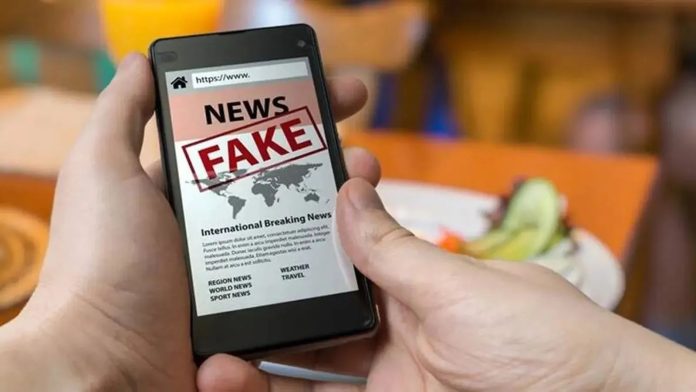Pradeep Gupta
Fundamental Rights are the soul of Indian Constitution. Of them, right to freedom of speech and expression is the crown. In the recent case before the Division Bench of the Bombay High Court titled Kunal Kamra & Ors Vs Union of India, challenge was thrown to the validity of Rule 3(1)(b)(v) of the Information Technology Rules, 2021 as amended in 2023. The amendment broadened the definition of ‘fake news’ to cover ‘government business’ and notified the Press Information Bureau’s (PIB’s) Fact Check Unit (FCU) as the FCU under the provision of the amended rules. The FCU could flag any social media posts it deemed ‘fake or false or misleading’ regarding government affairs and compel social media platforms to remove such content to maintain their ‘safe harbour’ status and legal immunity. This raised concerns over free speech and government regulation.
The two judges Bench of the Bombay High Court gave a split verdict. While one learned Judge upheld the validity of the amendment, the other struck it down being ultra-vires of the constitution. Following the split verdict, the Chief Justice of Bombay High Court appointed Justice A.S Chandurkar as the ‘tie breaker’ judge to hear the matter and give a final opinion on the petitions. In the meanwhile, on 20th March, 2024 the Central Government notified the FCU under PIB. However, a day later, the Supreme Court stayed the operations of the notification until Bombay High Court took a final decision on the petitions challenging the amended rules. Justice Chandurkar delivered his decisive opinion on the 20th September, 2024. Legal principles dealt with by the verdict /opinion of majority judgement in this case dealing with fundamental right of freedom of speech and expression, as brought out below, should be of interest both to students of law as well as common citizens of the country.
Sub Clause (a) of the Clause (1) of Article 19 of the constitution confers right of freedom of speech and expression to all its citizens. Such freedom is restrained by reasonable restrictions exhaustively listed in the sub clause (2) of Article 19. Justice Chandurkar has opined that amended Rule 3(1)(b)(v) curtails the fundamental right by seeking to place restrictions that are not in consonance with the Article 19(2) of the constitution. Hence held the impugned amendment to the Rules to be ultra-vires of Article 19(1)(a) and Article 19(2) of the constitution; and further
Article 19(1)(g) grants all citizens right to practice any profession, or to carry on any occupation, trade or business. In the case in hand, a piece of information that is not subjected to rigors of Rule 3(1)(b)(v) of the amended Rules of 2021 when in print media, being subject those rigors when in the digital form is arbitrary and thus an infringement of right guaranteed under Article 19(1)(g) of the constitution; and further
By constituting the FCU, the Government itself became the arbiter of its own cause in as much as it was to decide which information was fake or false or misleading. It was held that the Central Government could not be an arbiter in its own cause as that would be violative of the principles of Natural Justice. This compounded with the disparity that the test of any information being fake or false or misleading while applicable to the digital version is inapplicable to the very same information when published in the print media is discriminatory being not based on any intelligible criteria and hence violative to ‘Right to Equality’ as laid down under Article 14 that provides that State shall not deny to any person equality before the law or equal protection of laws within the territory of India. and; further
The learned judge has opined that absence of guidelines for identifying “fake or false or misleading” information renders the expression vague and overboard, rendering it liable to be struck down. The learned judge goes on to endorse the findings of the brother judge that the impugned Rule creates a substantive law beyond the parent Act of 2000 and hence is ultra-vires of the basic Act. Further that in totality of facts and circumstances, the impugned Rule would result in a ‘chilling effect’ discouraging the intermediaries from exercising their legal right due to threat of legal sanction. The impugned Rule was also held as not satisfying the ‘proportionality test’ especially when it seeks to abridge fundamental rights guaranteed under Article 14, 19(1)(a) and 19(1)(g).
In conclusion, Justice Chandurkar opined that Rule 3(1)(b)(v) of the Rules of 2021, as amended in 2023, is liable to be struck down. The opinion of the learned judge has settled the matter in favour of petitioners by 2-1 majority. His opinion will be placed before the Division Bench of the two judges, which would formally announce the verdict against the impugned Rule. An appeal is likely to be filed before the Supreme Court given that similar issues are pending before the Delhi and Madras High Courts. Notwithstanding the court verdict, the problem of fake news cannot be brushed aside. Perhaps a way forward may be to setup an autonomous institution, independent of government control, with well defined role to undertake the requisite checks. Simultaneously, some self regulatory mechanism may also be adopted by the social media platforms.
(The author is a law student in the University of Jammu)


